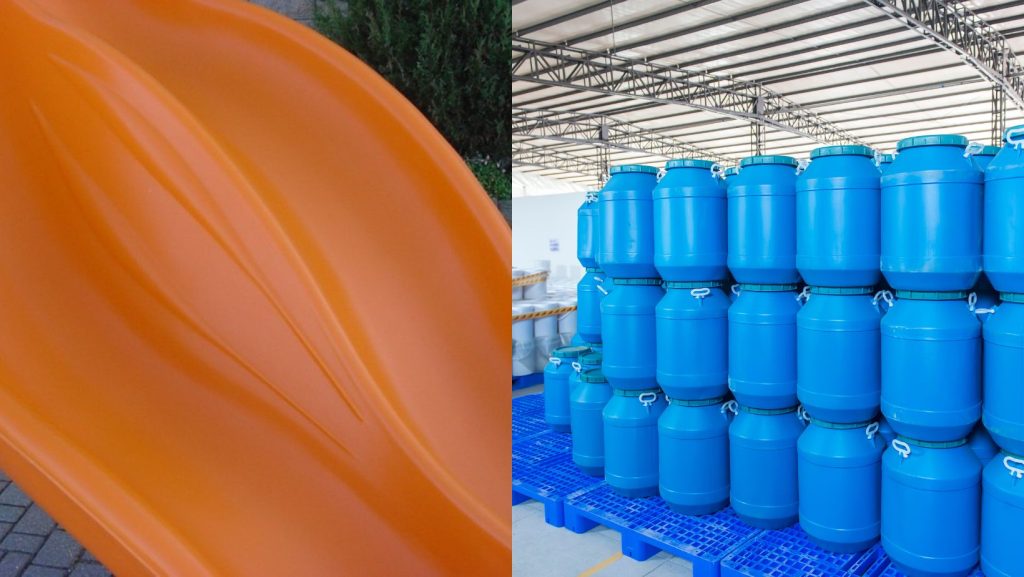
Walk through any industrial facility, marina, or playground, and you’ll encounter some of the toughest plastic products ever made. These aren’t just ordinary containers or equipment—they’re rotationally molded masterpieces that can withstand decades of punishment. From fuel tanks that endure constant vibration in vehicles to playground equipment that survives years of weather and countless energetic children, these products demonstrate remarkable resilience.
This type of plastic manufacturing produces products with advantages that simply can’t be matched by other methods which is why it’s a preferred choice for industries requiring durable, long-lasting solutions.
In this blog post, we’ll explore what sets rotational molding apart from other manufacturing methods and highlights why it’s often chosen for its exceptional durability.
What Makes Rotational Molding Different?
Rotational molding works differently from other plastic manufacturing processes, and it’s this difference that contributes to the creation of such durable plastic products.
The process begins with plastic resin powder placed inside a mold, which is then heated while rotating on multiple axes. This slow, controlled rotation ensures the melted plastic coats every surface evenly, creating hollow products with remarkable consistency.
Unlike injection molding, which forces molten plastic under high pressure into a mold, or blow molding, which inflates plastic against mold walls, rotational molding relies on gravity and centrifugal force. This gentler approach eliminates the stress concentrations and weak points that plague other methods.
The slow, even heating cycle is crucial. While injection molding happens in seconds and blow molding in minutes, rotational molding takes time. This patient process allows the plastic to flow naturally, eliminating air bubbles and ensuring complete coverage of complex shapes without rushing or forcing the material.
Three Key Durability Advantages
Seamless Construction
The most significant advantage of rotational molding is its ability to create completely seamless, one-piece products. There are no joints, welds, or connection points where failure typically begins. This seamless construction eliminates the weakest links found in assembled plastic products.
Consider chemical storage tanks used in industrial applications. Traditional manufacturing might require welding multiple pieces together, creating potential failure points where chemicals could leak. Rotationally molded tanks have no such vulnerabilities—they’re born as single, continuous shells capable of containing aggressive chemicals for decades.
Marine buoys provide another excellent example. Ocean environments are incredibly harsh, with constant salt spray, UV exposure, and mechanical stress from waves and impacts. Seamless construction means there are no joints for saltwater to penetrate and gradually weaken the structure.
Uniform Wall Thickness = Superior Strength
Rotational molding naturally creates uniform wall thickness throughout the entire product. The rotating motion ensures plastic material distributes evenly, even in complex shapes with varying geometries. This consistency is nearly impossible to achieve with other manufacturing methods.
Injection molding often creates thin spots at extremities or areas farthest from injection points. These thin areas become stress concentrators where cracks typically initiate. In contrast, rotational molded products maintain consistent strength throughout their structure.
This uniform thickness prevents the catastrophic failures common in other plastic products. Instead of sudden breaks at weak points, rotationally molded items tend to wear gradually and predictably, often providing decades of reliable service before replacement becomes necessary.
Weather and Chemical Resistance
The rotational molding process inherently creates products with superior environmental resistance. The thorough heating and slow cooling cycle allows additives like UV stabilizers and chemical-resistant compounds to distribute evenly throughout the material.
Outdoor equipment demonstrates this advantage clearly. Playground equipment made through rotational molding maintains its structural integrity and color for decades, even under constant sun exposure and temperature cycling. Industrial containers routinely handle aggressive chemicals that would quickly degrade products made by other methods.
This environmental durability extends the service life of rotationally molded products far beyond alternatives, making them cost-effective despite potentially higher initial investment.
Built to Last: The Rotational Molding Advantage
The combination of seamless construction, uniform wall thickness, and superior environmental resistance creates durable plastic products that consistently outperform alternatives. These aren’t marketing claims—they’re engineering realities proven in countless real-world applications.
When your project demands long-lasting plastic products that won’t fail at critical moments, rotational molding delivers the reliability you need. The process may take longer and cost more initially, but the extended service life and reduced replacement costs make it the economical choice over time.
Ready to discover how custom rotational molding services can solve your toughest durability challenges? Contact our team to explore how this proven manufacturing process can create the long-lasting solutions your application demands.